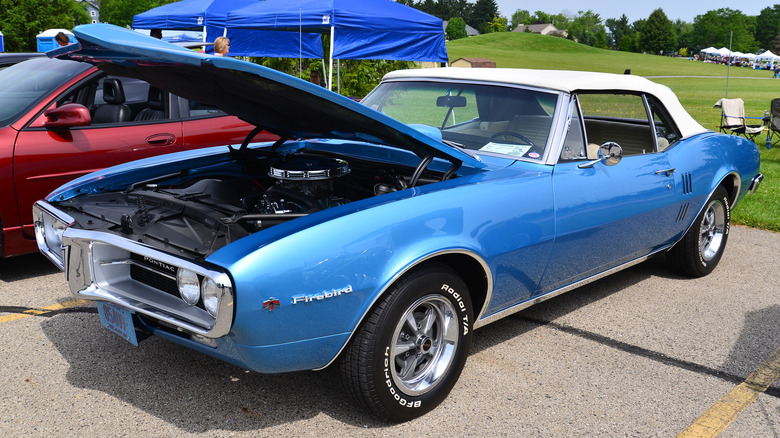
5 FACTS ABOUT THE 1967 PONTIAC FIREBIRD PROBABLY ONLY HARDCORE CAR FANS KNOW
The 1967 Pontiac Firebird represents the first year of Pontiac's version of a "pony car," created to compete with and take sales from the amazingly successful Ford Mustang. Even though it was a sister car to GM's other pony car, the Chevy Camaro, Pontiac engineers were able to make the Firebird different enough to have its own unique identity. In that spirit, here are 5 facts about the 1967 Pontiac Firebird probably only hardcore car fans know.
The Firebird name was first used by General Motors in 1954
According to Pontiac's press release announcing the 1967 Firebird, the car "is named after a legendary Indian symbol which promised action, power, beauty and youth." The original Firebird I was a fighter jet-styled concept car powered by a gas turbine engine, 13 years before it reappeared on the Pontiac pony car that would have a 36-year production run.
The 1967 Pontiac Firebird was the only Firebird to have vent windows
Back in the day when cigarette smoking was much more common, drivers valued the vent windows that were commonly placed at the leading edge of each front door, ahead of the main door window. These allowed the cigarette smoke from the front passengers to be quickly ejected from the vehicle. For the 1968 model of the Firebird, and all others that followed, the vent windows were removed and replaced by a single pane of window glass. A flow-through ventilation system was also added to improve air circulation.
Read more: Major Car Battery Brands Ranked Worst To Best
The 1967 Pontiac Firebird Used Some Of The Same Body Parts As The 1967 Chevrolet Camaro
To reduce production costs, Pontiac Firebird engineers were required to use the front fenders and the doors from the 1967 Camaro on the Firebird. To this, they added a unique one-piece "bird beak" chrome bumper/grille, a domed hood, and a tail panel to give the Firebird its own personality. By taking the Camaro rear fenders and restamping them with fake louvers, the Firebird designers found yet another way to differentiate the two vehicles.
The 1967 Pontiac Firebird OHC engine was inspired by the Mercedes-Benz inline-six of the period
Pontiac General Manager John DeLorean tasked engineer Malcolm McKeller with developing a new inline six-cylinder engine for the brand. McKeller used the current Mercedes-Benz Inline Six as his inspiration while adding some clever updates to make ongoing maintenance less of a chore. These innovations included a fiberglass-reinforced rubber belt that would replace the cam chain and last the life of the engine, plus self-adjusting valves that eliminated a difficult procedure on an OHC engine.
Out Of The 82,560 1967 Pontiac Firebirds Produced, Only 65 Came With The 400 Ram Air Engine
The least popular engine in the 1967 Pontiac Firebird was the one with the highest output. The 400 Ram Air was actually rated at the same horsepower as the standard 400 engine, 325 hp, and it developed this power at much higher revs. This, plus the extra cost of the Ram Air option over the standard 400 ($263 more, or about 10% of the car's base price) may have limited the appeal of this engine upgrade to a few higher-income drag racers. In today's market, these 65 cars are the most valuable '67 Firebirds you can find!
The 1967 Pontiac Firebird remains an extremely interesting vehicle for enthusiasts and collectors. It was Pontiac's initial response to the pony car phenomenon, it was based on the already-designed Camaro but created its own identity in the marketplace, and it was the beginning of the story that led to the Firebird's firmly established place in our culture, thanks to touchstones like "The Rockford Files" and "Smokey and the Bandit." Production may have ended in the 2002 model year, but the Firebird lives on.
Read the original article on SlashGear
2024-05-06T20:24:50Z dg43tfdfdgfd